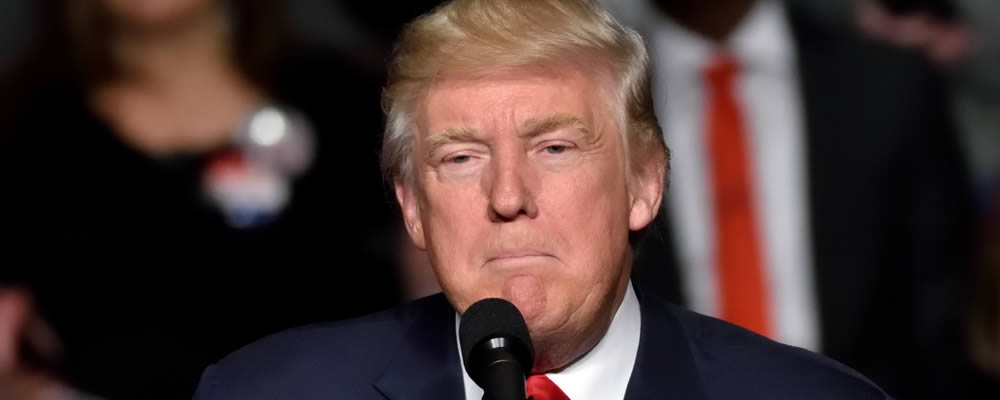- Euro US Dollar Exchange Rate Above 1.18 – Can the pair hold these two-year-highs?
- US Data Fails to Impress – ISM’s manufacturing PMI drops in July
- Final Eurozone PMIs Disappoint – But retail data impresses
- USD Forecast: Non-Farm Payroll Report on Friday – ISM’s final July PMI Thursday
Updated 16:40 BST 03/08/2017:
Euro US Dollar Exchange Rate Benefits from Poor US Data
Thursday’s US data failed to give the US Dollar any fresh appeal and the Euro US Dollar exchange rate continued to trend near its best 2017 levels.
At the time of writing this update, EUR USD trended in the region of 1.1882.
While Markit’s US PMIs beat expectations on Thursday, USD traders typically prefer ISM’s PMIs which fell short.
ISM’s non-manufacturing composite PMI for July was forecast to slip from 57.4 to 57 but instead fell to just 53.9.
[Previously updated 12:37 BST 03/08/2017]
Despite this week’s relatively disappointing Eurozone PMIs from July, the Euro US Dollar exchange rate held its ground relatively close to two-year-highs on Thursday.
The Eurozone’s final July composite PMI from Markit was projected to slide from 56.3 to 55.8, but came in with a slightly worse than expected result of 55.7.
However, June’s Eurozone retail sales results were impressive. Monthly retail sales improved from 0.4% to 0.5% despite being projected to slow to 0.1% and the yearly print jumped from 2.4% to 3.1%.
This helped the Euro to hold its highs against a weak US Dollar as investors awaited the day’s US data.
[Published 10:35 BST 02/08/2017]
The Euro US Dollar exchange rate has surged again this week. The primary reason for the pair’s advance was investors settling their positions for the end of July, but the Euro has been able to hold its gains so far due to broad US Dollar weakness.
EUR USD began the week trading at about 1.1751 before jumping by around half a cent on Monday evening. The pair trended flatly yesterday, but on Wednesday morning it hit a new 2017 high of 1.1861. This was the pair’s best level in over two years, since January 2015.
Euro (EUR) Holds Ground on Solid Eurozone Stats
After the Euro benefitted from month-end fixing at the beginning of the week, it has held its ground near its best levels against the US Dollar.
This has been largely due to weakness in ‘Greenback’ trade, but the latest Eurozone data has helped to support the shared currency too.
Eurozone employment data has been generally solid this week, with Germany’s July unemployment change results beating expectations and the bloc’s overall unemployment rate for June unexpectedly improving from 9.2% to 9.1%.
The Eurozone’s Q2 Gross Domestic Product (GDP) projections were also solid, with the bloc looking to have grown at a pace of 2.1% in the second quarter as expected.
Analysts at the Canadian Imperial Bank of Commerce predict there’s still strength left in the Euro’s recent run too. According to Bipan Rai, strategist from the CIBC;
‘The domestic fundamentals in the Eurozone are robust, and the market is gradually repricing that into the currency’
US Dollar (USD) Fails to Find Fresh Support
Demand for the US Dollar has remained limp this week as data and political news fails to provide markets with any new reason to buy the currency.
Tuesday’s American session saw the publication of various notable US ecostats, but none of them were particularly impressive. ISM’s July manufacturing PMI fell short of expectations, falling from 57.8 to 56.3 rather than the projected 56.5.
While Markit’s final July manufacturing PMI for the US was actually slightly better-than-expected, coming in at 53.3 rather than the forecast 53.2, this failed to give the US Dollar any boost.
The latest PCE price index results from June were also slightly disappointing, coming in at 1.4% year-on-year. As US data has failed to impress this week, markets continue to bet that the Federal Reserve will leave US interest rates frozen until 2018.
On top of economic concerns, the US Dollar has seen persistent pressure from US political uncertainties.
The past week has seen Anthony Scaramucci sacked from his role as White House communications director a mere 10 days after beginning the job, worsening market concerns about the stability of the White House.
Concerns that the Trump administration will fail to push through tax reform and infrastructure plans are also weighing on the ‘Greenback’.
In fact, some analysts believe that political news has been the primary cause of recent USD weakness. According to Sireen Harajli, FX strategist from Mizuho;
‘(Political) policy uncertainty in the US I think has been the biggest driver of declines in the Dollar recently, any positive effect from the election of President Trump I think at this point has been priced out.’
Euro US Dollar Forecast: US Non-Farm Payroll Report in Focus
The Euro US Dollar exchange rate could see a shift in movement at the end of the week depending on the results of the highly anticipated US Non-Farm Payroll report from July.
Until then, Euro investors will have another slew of Eurozone ecostats to react to during Thursday’s session. Markit will publish its final Eurozone services and composite PMIs and June’s Eurozone retail sales report will be published.
The European Central Bank (ECB) will also be publishing its latest economic bulletin. If the bulletin contains any new indication on what action the bank may (or may not) take before the end of the year, this could inspire Euro movement.
In terms of US data, Thursday will see the publication of ISM’s non-manufacturing PMI for July, as well as the latest jobless claims figures.
Even if these impress, the US Dollar is unlikely to see much strength as investors will be anticipating Friday’s NFP data before making big moves on the ‘Greenback’.
EUR USD Interbank Rate
At the time of writing this article, the Euro US Dollar exchange rate trended in the region of 1.1845. The US Dollar to Euro exchange rate traded at around 0.8440.



